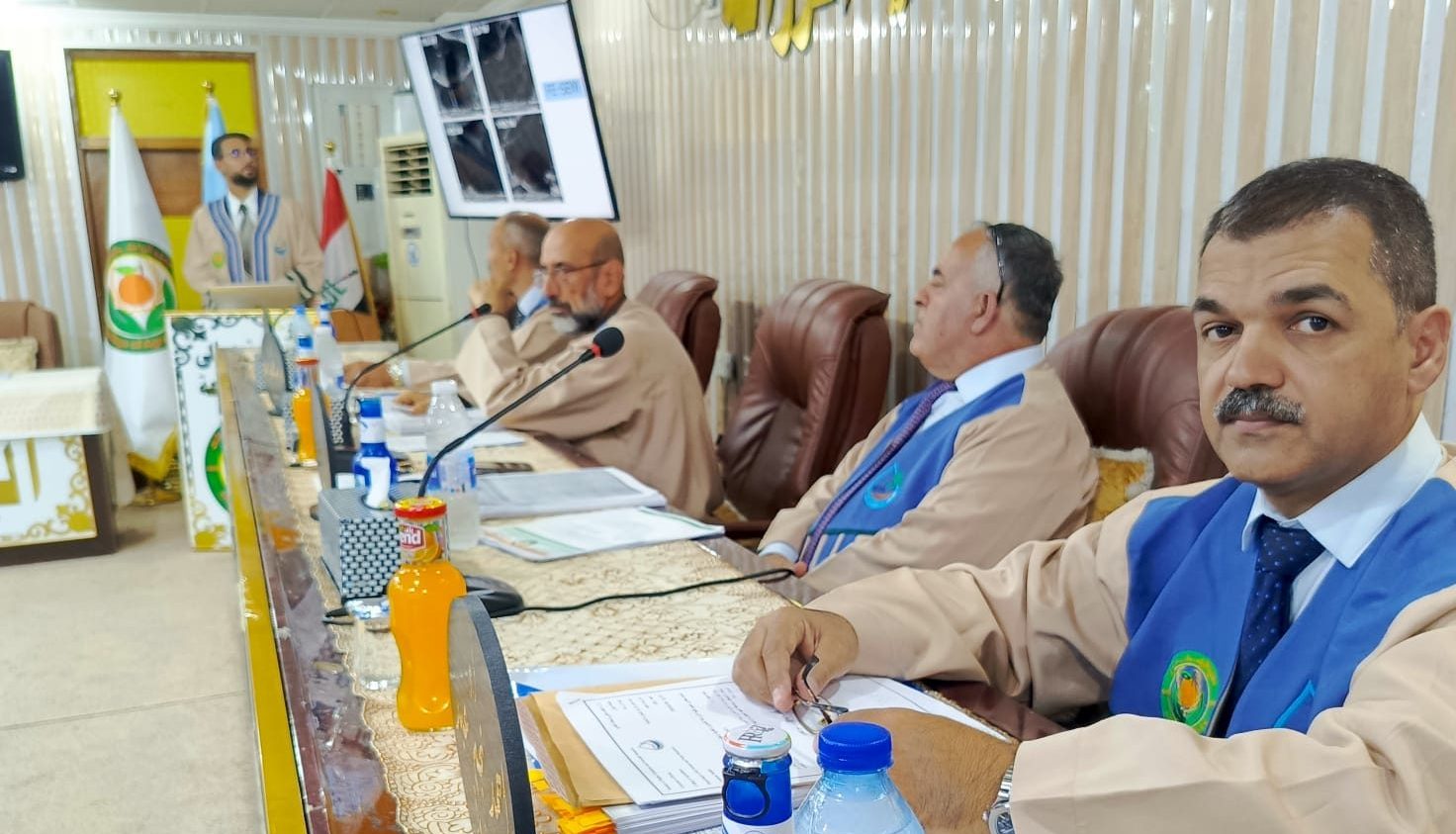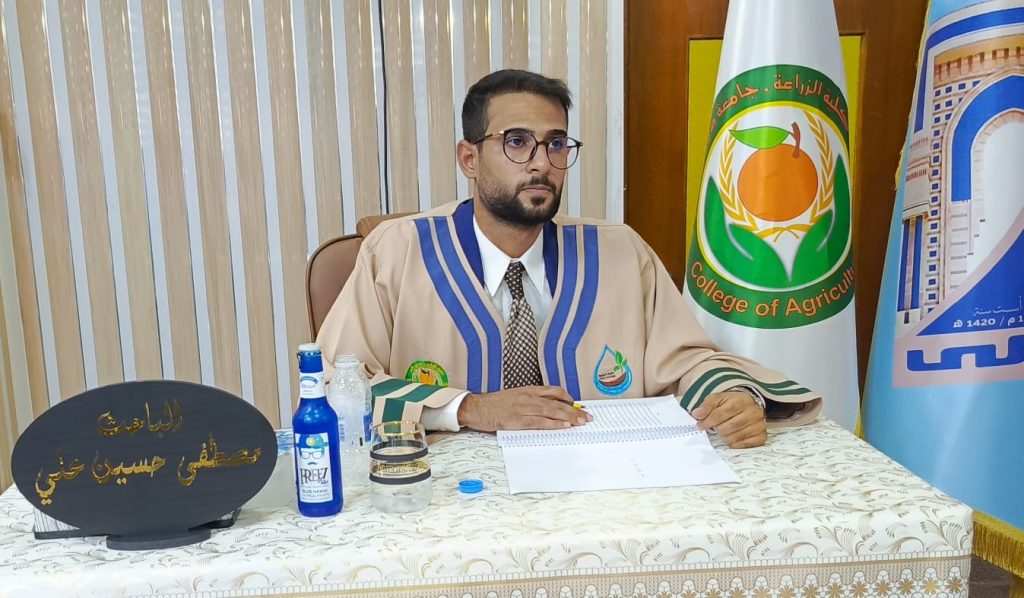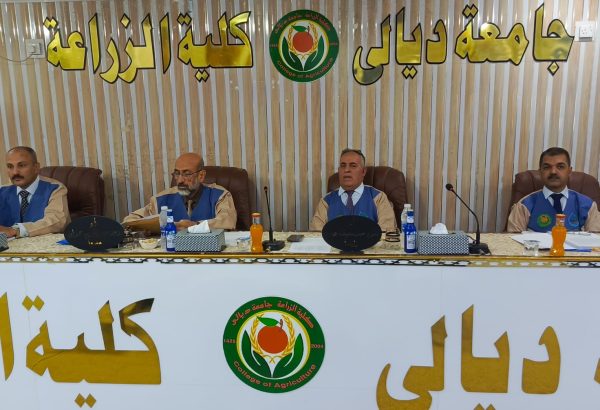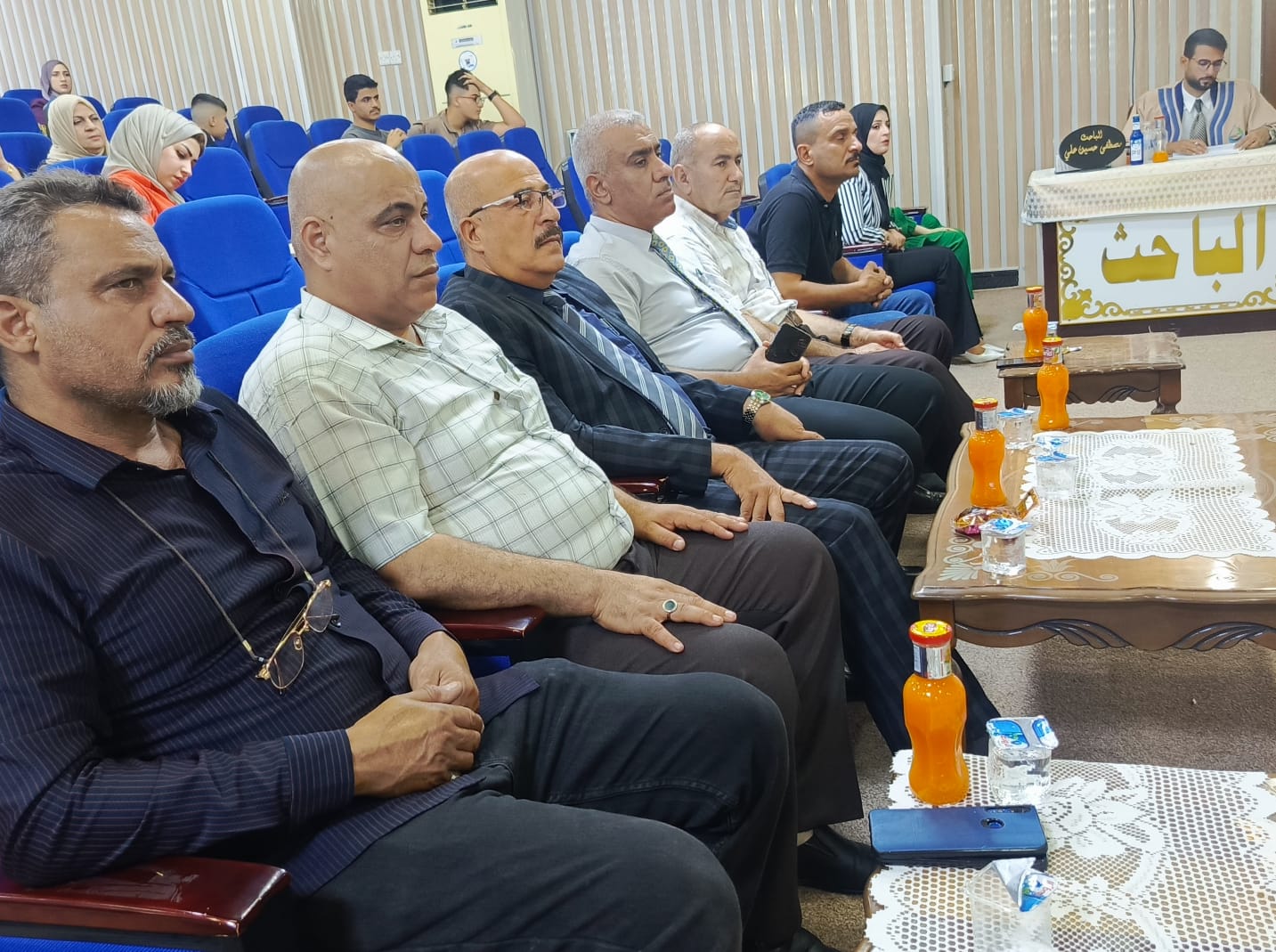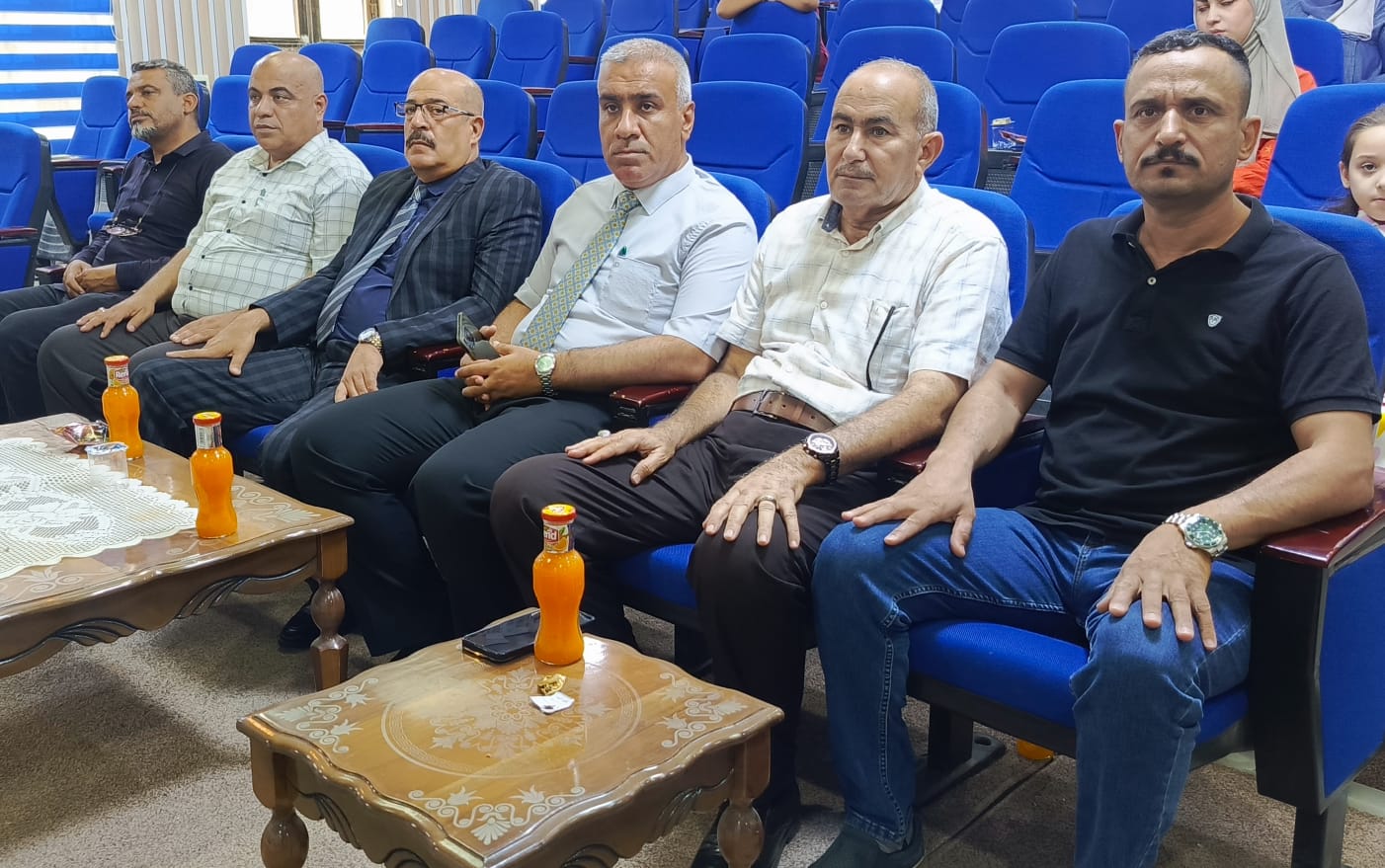A master’s thesis at the College of Agriculture on the adsorption and release of lead by biochar from aquatic environments.
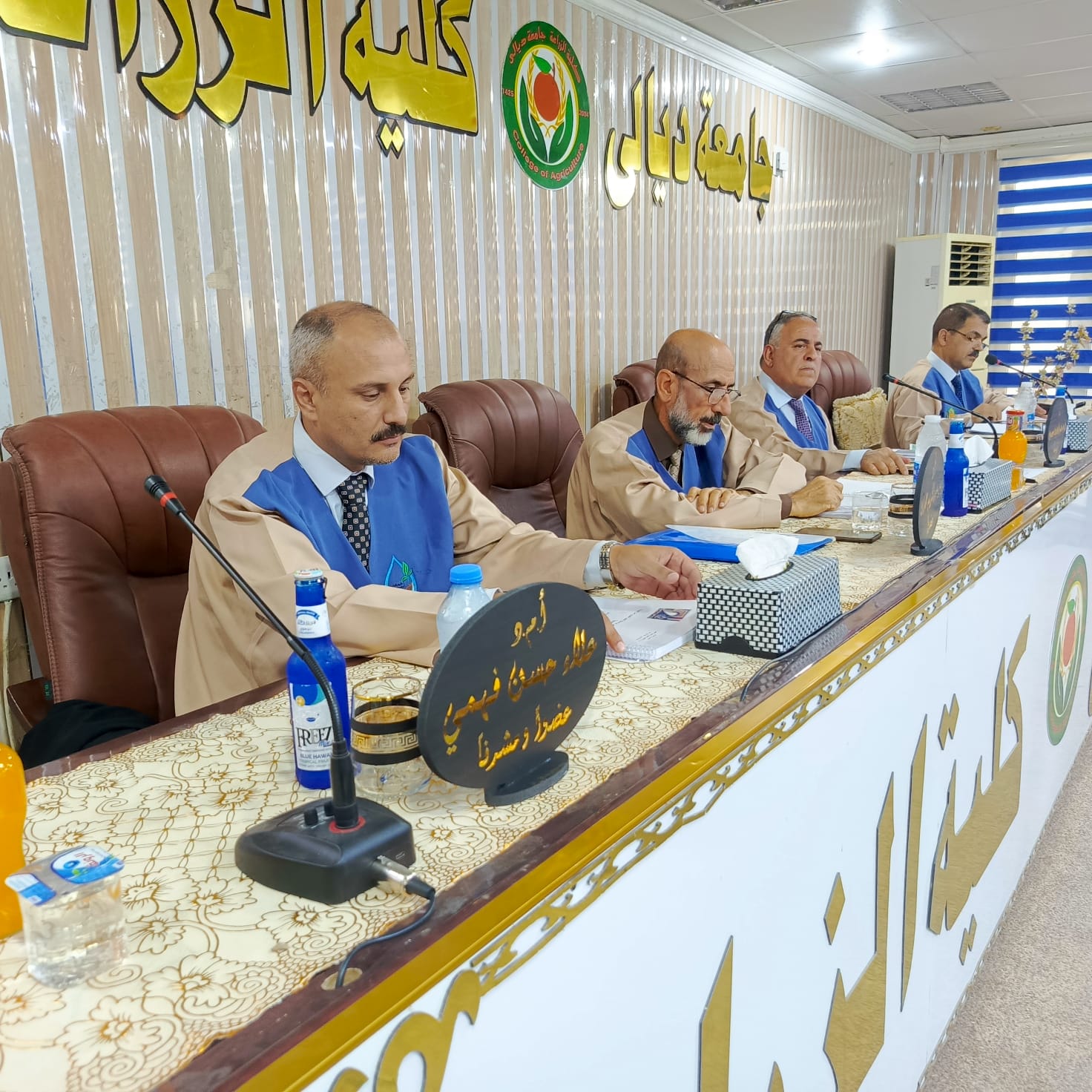
The College of Agriculture at the University of Diyala discussed a master’s thesis entitled “Adsorption and Release of Lead by Biochar from Aqueous Environments.” The study, presented by Mustafa Hussein Ali, aimed to develop an environmentally friendly, cost-effective material for removing heavy metals from aqueous environments.
The biochar was prepared through pyrolysis of two widely available raw materials in Diyala Governorate—date palm waste and sheep manure—at two different temperatures: 300°C and 700°C.
The study reached several conclusions, including that pyrolysis is a suitable method for producing biochar. It also found that sheep manure and date palm waste are ideal and readily available raw materials for this purpose. Advanced diagnostic tools such as FT-IR, FESEM-EDX, Zeta Potential, CEC, and BET were proven to be effective in characterizing the biochar. The adsorption process was found to be simple, low-cost, and highly effective in removing lead ions, using the biochar derived from both palm waste and sheep manure. The equilibrium time for the adsorption of lead ions (Pb²⁺) was achieved within 30 minutes for PFB-700 and SMB-700, and within 120 minutes for PFB-300 and SMB-300.
Moreover, the adsorption process on the studied biochar surfaces was spontaneous and required no external energy input, becoming more efficient with increasing temperature and under neutral pH conditions. The biochar produced from date palm waste at 700°C exhibited the highest lead removal efficiency, followed closely by the biochar from sheep manure at the same temperature. This finding highlights the role of high temperatures in activating biochar surfaces. Additionally, the date palm biochar produced at 700°C demonstrated the highest adsorption capacity (qm), reaching 527 mg/g, followed by the sheep manure biochar at the same temperature with a capacity of 266.85 mg/g. The sheep manure biochar produced at 300°C had an adsorption capacity of 149.25 mg/g, while the palm biochar at the same temperature showed the lowest capacity, with 125 mg/g.
The study recommends utilizing the biochar surfaces explored in this research for the removal of both organic and inorganic pollutants, as well as evaluating their effectiveness in multi-ion systems to achieve accurate assessments of adsorption in natural environments. It also suggests investigating the potential of biochar from date palm and sheep manure at 700°C for treating and improving the properties of both contaminated and non-contaminated soils. Additionally, it encourages the development of nanoscale biochar from the same raw materials used in this study and testing its efficiency in removing heavy metals from aqueous environments.
Producing biochar from various raw materials at different temperatures and assessing its effectiveness in purifying water and soil contaminants demonstrate its potential as an eco-friendly material. This approach also promotes the recycling of waste, contributing to the sustainable development of natural resources such as soil and water.

